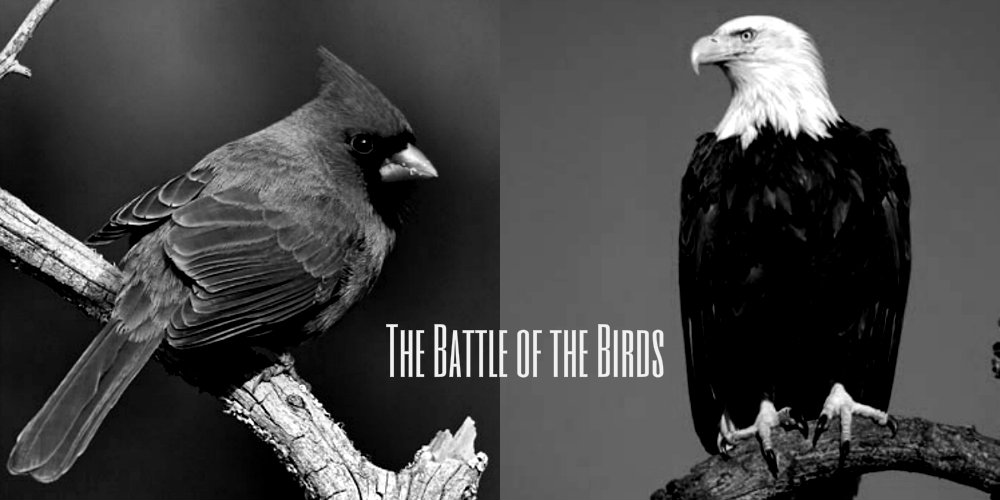A brief overview of specific species placement in the avian hierarchy
Outside the biology classroom, little is referenced concerning the specific placement of avian species on the hierarchical food chain. However, in directly comparing two very different species, comes a veritable battle of the birds.
Cardinals typically eat seeds. Eagles typically tear the flesh off their prey (fish, small birds, ducks, muskrats, turtles, mountain goats and carrion) holding it with strong talons and ripping with their strong beaks.

Cardinals nest in trees, and are found all over North America. Eagles build aeries hundreds of feet in the air in remote locations, in order to better see their prey far below, making them the bird with the largest nest.
Cardinals have a wingspan of about 10-12 inches. Eagles have a wingspan of about 7 feet.
Cardinals live up to 15 years. Eagles can live a long time, with a longevity record of 28 years in the wild and 36 years in captivity.
Adult cardinals typically only weigh 1.48-1.69 ounces. Adult eagles weigh 8 to 14 pounds, with the female eagle the larger and heavier of the two genders.
Cardinals fall prey to cats, dogs, hawks, shrikes, owls, snakes, squirrels, blue jays, chipmunks, and eagles. Eagles have no natural predators, as they reside at the top of the food chain.
Cardinals sing to communicate with their mates or other birds. Eagles use chirping whistles that grow harsher and shriller with age.
Cardinals have been named the state bird of seven states; North Carolina, West Virginia, Ohio, Illinois, Indiana, Kentucky and Virginia. The eagle is the United States’s national symbol.
It is evident that the eagle illustrates superiority over all other species in its genus.















